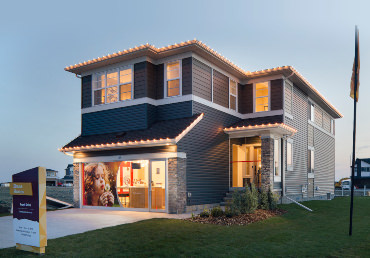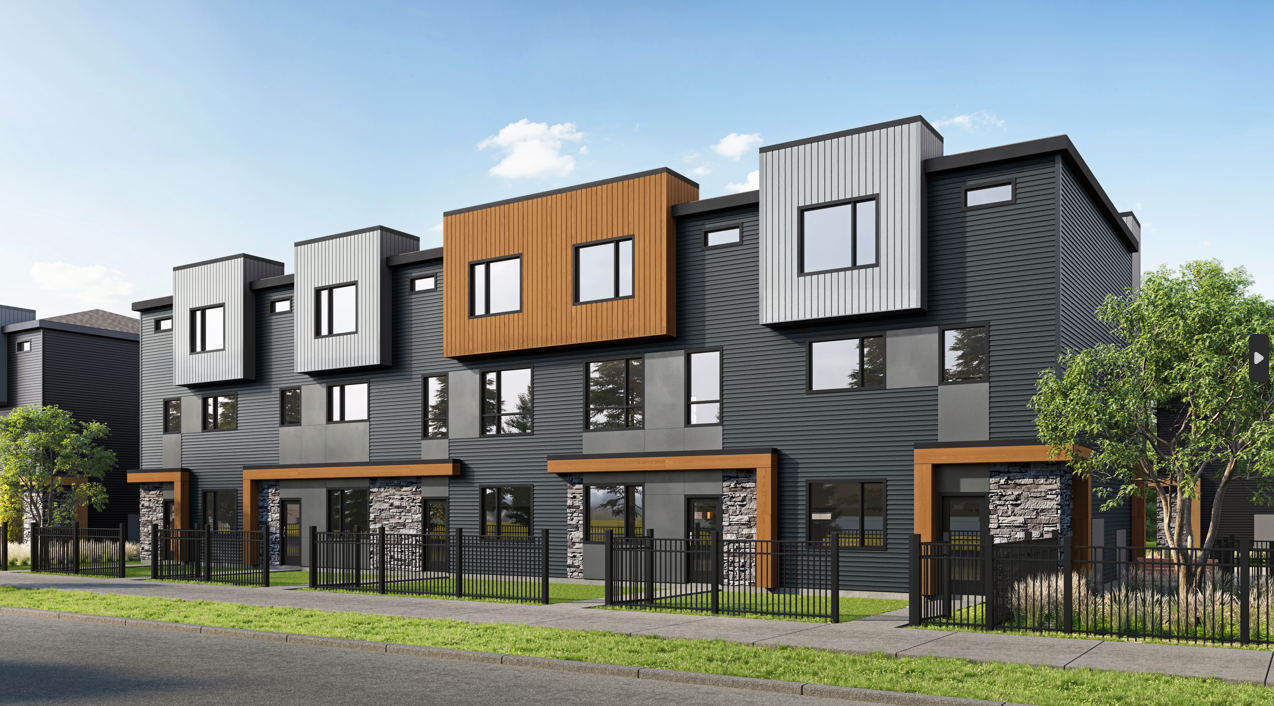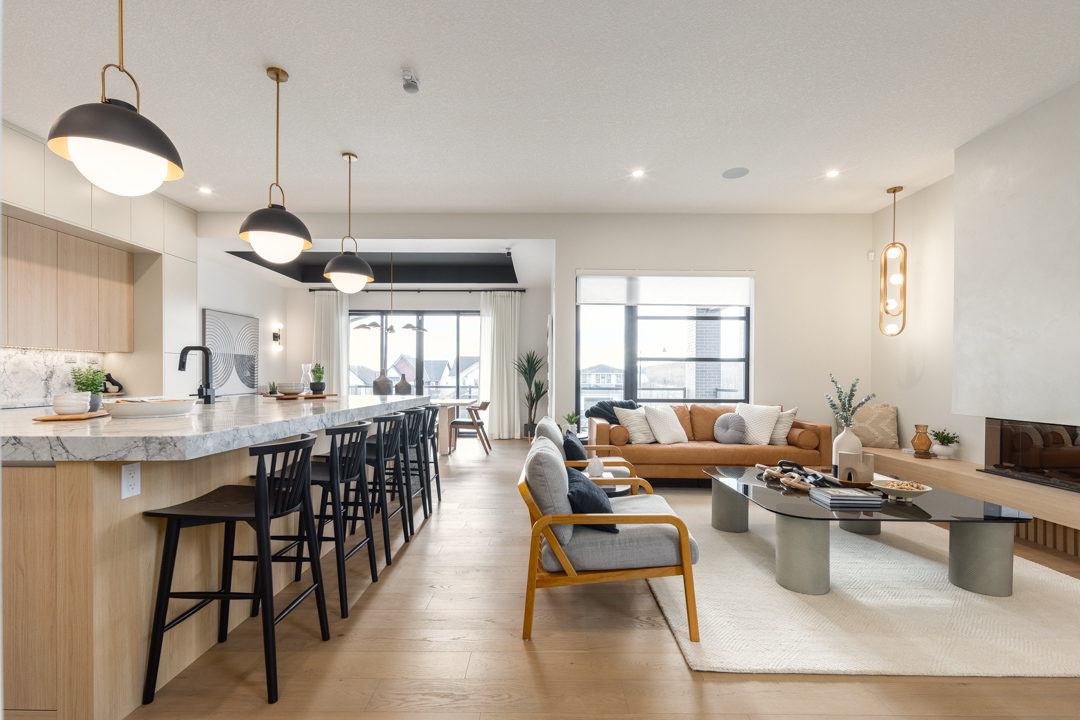When hunting for a new home, it’s important to consider all options.
After deciding on the type of home and price range, people need to determine if they’d rather buy something newly-built or previously-owned.
Each option has its benefits.
Here’s a look at factors to ponder when choosing between the new home or resale listing route:
Expenses after moving in
The condition of the materials in a previously-owned home depends on its age, wear and tear, and any upgrades the previous owner made prior to selling.
New homes, on the other hand, are more of a sure thing. Just as the four walls are brand new, so are its specifications.
In general, new homes drastically decrease a buyer’s need to replace flooring, appliances, the furnace, and any other materials no longer making the grade. They also improve a house hunter’s chances of finding current finishes and paint colours, rather than needing a renovation to step out of the 1970s or 80s.
Peace of mind
If something significant happens to the home, it’s important to know there’s a safety net. Every home built in Alberta since February 2014 offers this advantage.
This is when the provincial government introduced the New Home Buyer Protection Act. This includes requiring the builder to provide proof of a warranty plan that covers, at minimum, one year for labour and materials, two years for distribution systems, five years for its building envelope, and 10 years for structural integrity.
The frame and foundation are the two main examples of what structural integrity refers to.
Use of space
With a newly-built home come current layout concepts.
As floor plan designs advance over the years, drafting departments are finding new ways to use every sliver of space in a home. This pours more square footage into prime areas like the kitchen and bedrooms, and less on oversized hallways.
If enclosed spaces on the main floor is the preference, homes build in the 80s, 90s, and early 2000s are your best bet.
Buying new will likely mean fewer walls and a greater emphasis on bright and open-concept spaces.
There’s no need to jog down the hallway and around the corner to chat with a family member. In an open design, conversations can happen one room away.
Taking possession
Many factors play a role in timing a move. A buyer selling or ending the lease on their current home are among the biggest.
Buying a home through the resale market means the possession date needs to be negotiated with the seller who likely has a set of scheduling restrictions of their own.
Through a builder, things are more flexible.
When building from scratch, a buyer schedules their move-in after construction, which is usually about six to eight months later.
This gives them plenty of time to sell their existing home and not be rushed into taking less than what they are looking for.
The extended possession also gives first-time purchasers the chance to save money before moving out of their parents’ place or rental.
Builders also provide much quick move-ins with immediate possession homes or homes that are already under construction.
Location
People who need to live within a few blocks of downtown will likely find more options through MLS listings. But for a master-planned community with expansive parks and pathways, and architectural controls – which contribute to maintaining the value of homes in the community – there is an abundance of opportunity through the new home market.
Energy
Government regulations around the energy efficiency required for new homes change.
This means new homes are more likely to be equipped with sustainable features than older builds. Some builders today even exceed code minimums for energy efficiency.
Along with leaving a lighter environmental footprint, homes with greener features are known to provide substantial savings on monthly utility bills.
After deciding on the type of home and price range, people need to determine if they’d rather buy something newly-built or previously-owned.
Each option has its benefits.
Here’s a look at factors to ponder when choosing between the new home or resale listing route:
Expenses after moving in
The condition of the materials in a previously-owned home depends on its age, wear and tear, and any upgrades the previous owner made prior to selling.
New homes, on the other hand, are more of a sure thing. Just as the four walls are brand new, so are its specifications.
In general, new homes drastically decrease a buyer’s need to replace flooring, appliances, the furnace, and any other materials no longer making the grade. They also improve a house hunter’s chances of finding current finishes and paint colours, rather than needing a renovation to step out of the 1970s or 80s.
Peace of mind
If something significant happens to the home, it’s important to know there’s a safety net. Every home built in Alberta since February 2014 offers this advantage.
This is when the provincial government introduced the New Home Buyer Protection Act. This includes requiring the builder to provide proof of a warranty plan that covers, at minimum, one year for labour and materials, two years for distribution systems, five years for its building envelope, and 10 years for structural integrity.
The frame and foundation are the two main examples of what structural integrity refers to.
Use of space
With a newly-built home come current layout concepts.
As floor plan designs advance over the years, drafting departments are finding new ways to use every sliver of space in a home. This pours more square footage into prime areas like the kitchen and bedrooms, and less on oversized hallways.
If enclosed spaces on the main floor is the preference, homes build in the 80s, 90s, and early 2000s are your best bet.
Buying new will likely mean fewer walls and a greater emphasis on bright and open-concept spaces.
There’s no need to jog down the hallway and around the corner to chat with a family member. In an open design, conversations can happen one room away.
Taking possession
Many factors play a role in timing a move. A buyer selling or ending the lease on their current home are among the biggest.
Buying a home through the resale market means the possession date needs to be negotiated with the seller who likely has a set of scheduling restrictions of their own.
Through a builder, things are more flexible.
When building from scratch, a buyer schedules their move-in after construction, which is usually about six to eight months later.
This gives them plenty of time to sell their existing home and not be rushed into taking less than what they are looking for.
The extended possession also gives first-time purchasers the chance to save money before moving out of their parents’ place or rental.
Builders also provide much quick move-ins with immediate possession homes or homes that are already under construction.
Location
People who need to live within a few blocks of downtown will likely find more options through MLS listings. But for a master-planned community with expansive parks and pathways, and architectural controls – which contribute to maintaining the value of homes in the community – there is an abundance of opportunity through the new home market.
Energy
Government regulations around the energy efficiency required for new homes change.
This means new homes are more likely to be equipped with sustainable features than older builds. Some builders today even exceed code minimums for energy efficiency.
Along with leaving a lighter environmental footprint, homes with greener features are known to provide substantial savings on monthly utility bills.


















